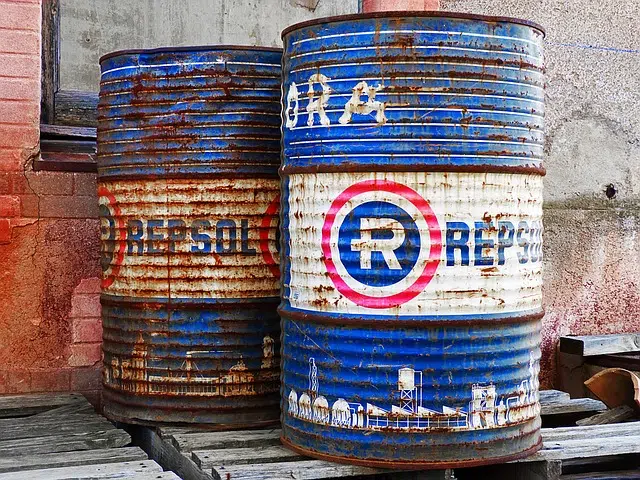
Metal drum for transporting fuel
A drum is a container used for the storage and transfer of liquids . It is a receptacle that closes hermetically , making it ideal for transporting those substances that need to remain isolated from the environment.
General characteristics
The characteristics of the drums are varied. They can have different sizes and be made of plastic , metal or other material. On a general level it can be said that they are similar to bottles , although larger (and therefore have a greater capacity).
The drums have multiple uses. It is common for them to be used to carry fuel , for example. They can also be used to transport oil (whether edible or oil intended for engines).
Cleaning products are often sold in drums. Floor cleaners , dishwashers and other similar items can be found in one, five or ten liter containers, to name a few.
Mineral water and juices , meanwhile, are offered in bottles in many supermarkets . Once again, the variety is wide, as there are five-liter, six-liter, twelve-liter and even twenty-liter drums.
Disposable or reusable
It is important to mention that there are disposable (or disposable ) drums and reusable drums . In the first case, they are originally intended to be discarded when emptied, while reusable drums have to be returned to the distributor of the product in question. In any case, to reduce the amount of waste generated, all drums can be used for second purposes or at least their material can be recycled so that they do not end up in the landfill.
And this is where we must act with our creativity or through rapid research to avoid the increase in non-degradable waste. For example, people who love cooking often need a large number of containers of different sizes and shapes to store their recipes, ranging from homemade jams to creams, self-harvested olives or crushed seed mixtures. Instead of buying them at a bazaar, they can take advantage of other products once they have consumed them.
A drum can also be transformed into a watering can for plants with a simple drilling job. It is undeniable that items manufactured for a specific purpose tend to be more practical and, above all, more aesthetic . However, it is very noble of us to reject these superficial aspects in pursuit of a decision that generates a lower impact on the environment. We must not forget that the benefit is for all living beings, including us.
The Jerrycan can
Although we don't usually think about the proper name of these containers, one design in particular was so relevant that it became known as Jerrycan . It is a 20-liter canister that the German army created to transport fuel shortly before World War II, and called it Wehrmachtskanister .

Two large metal fuel drums
Already during the war, the British were amazed by the design of this drum and decided to copy it. His version, however, received the nickname Jerry can to refer to the derogatory nickname by which they referred to the Germans ( Jerrys ) and the term can , which means "can."
The need to take the design of this German drum arose because the British had two models of their own that caused them different problems: the 9-liter one was easy to transport and robust, but it cost too much money to produce; The 18, although it was cheaper, its resistance left much to be desired . The latter caused significant fuel losses due to the holes made in its surface.
